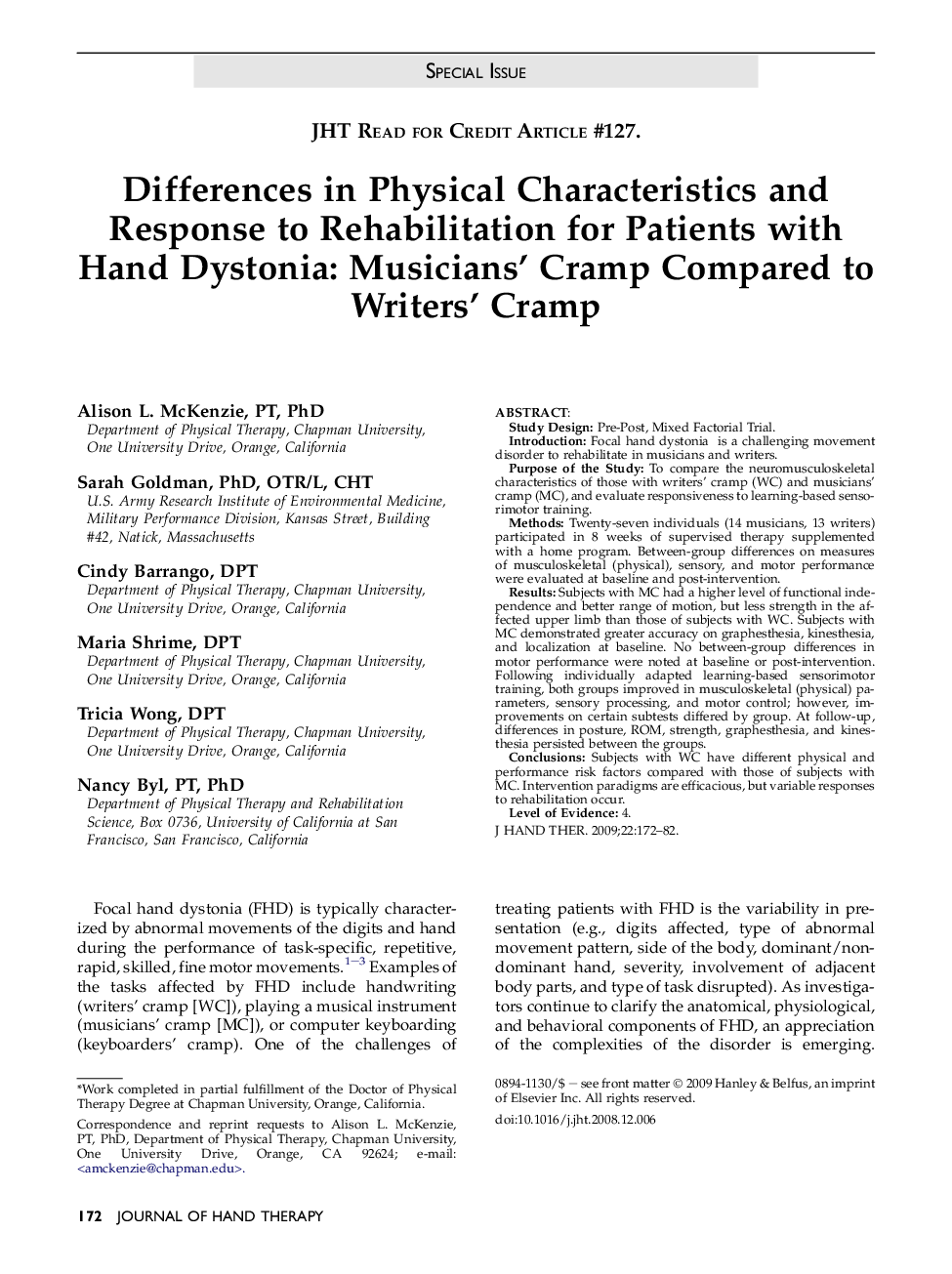| Article ID | Journal | Published Year | Pages | File Type |
|---|---|---|---|---|
| 2695208 | Journal of Hand Therapy | 2009 | 11 Pages |
Study DesignPre-Post, Mixed Factorial Trial.IntroductionFocal hand dystonia is a challenging movement disorder to rehabilitate in musicians and writers.Purpose of the StudyTo compare the neuromusculoskeletal characteristics of those with writers' cramp (WC) and musicians' cramp (MC), and evaluate responsiveness to learning-based sensorimotor training.MethodsTwenty-seven individuals (14 musicians, 13 writers) participated in 8 weeks of supervised therapy supplemented with a home program. Between-group differences on measures of musculoskeletal (physical), sensory, and motor performance were evaluated at baseline and post-intervention.ResultsSubjects with MC had a higher level of functional independence and better range of motion, but less strength in the affected upper limb than those of subjects with WC. Subjects with MC demonstrated greater accuracy on graphesthesia, kinesthesia, and localization at baseline. No between-group differences in motor performance were noted at baseline or post-intervention. Following individually adapted learning-based sensorimotor training, both groups improved in musculoskeletal (physical) parameters, sensory processing, and motor control; however, improvements on certain subtests differed by group. At follow-up, differences in posture, ROM, strength, graphesthesia, and kinesthesia persisted between the groups.ConclusionsSubjects with WC have different physical and performance risk factors compared with those of subjects with MC. Intervention paradigms are efficacious, but variable responses to rehabilitation occur.Level of Evidence4.
